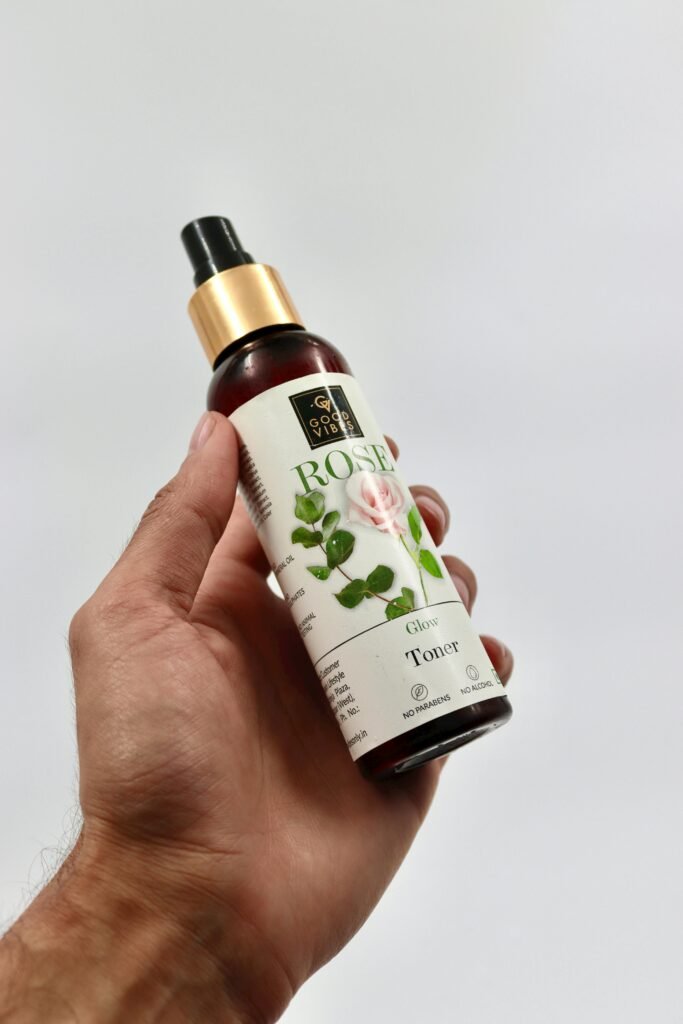You’re holding a high-quality wallet in your hands, and you want to make sure it remains in pristine condition for years to come. That’s where our article, “Proper Care Techniques for High-Quality Wallets: A Comprehensive Approach,” comes in. We’ll guide you through the essential steps to maintain your wallet’s durability, appearance, and functionality. From cleaning and conditioning to protecting it from everyday wear and tear, our comprehensive approach will help you keep your wallet looking and feeling great. So, let’s get started on ensuring your investment lasts a lifetime!

This image is property of images.pexels.com.
Choosing the Right Wallet Material
When it comes to choosing the right wallet material, genuine leather is often considered the top choice. Genuine leather is not only durable but also offers a sophisticated and timeless look. It ages well, developing a rich patina over time, adding character to your wallet.
However, it is important to explore other options as well. There are various wallet materials available in the market, such as synthetic leather, fabric, canvas, and even metal. Each material has its own set of advantages and disadvantages. For example, synthetic leather is often more affordable and easier to clean, while fabric and canvas wallets can be more lightweight and come in a variety of designs.
When making your decision, be sure to evaluate the durability and maintenance requirements of each material. Consider your lifestyle and personal preferences. Remember, your wallet is an everyday essential, so choose a material that suits your needs and style.
General Care Tips for Wallets
Taking good care of your wallet can greatly prolong its lifespan and keep it looking its best. Here are some general care tips to consider:
Keep It Clean
Regularly clean your wallet to remove dirt, dust, and debris. Use a soft cloth or a brush to gently wipe the surface. Avoid using harsh chemicals or abrasive materials that could damage the material of your wallet.
Avoid Overstuffing
While it may be tempting to fill your wallet with every card and receipt you own, overstuffing can lead to stretching, tearing, and an overall worn-out appearance. Keep your wallet streamlined by carrying only the essentials.
Rotate Usage
To prevent excessive wear and tear on your wallet, consider rotating between different wallets. This allows each wallet to have a break and helps distribute the stress evenly, ensuring a longer lifespan for each one.
Protect From Moisture and Sunlight
Moisture and sunlight can be detrimental to the quality of your wallet. Avoid exposing your wallet to excessive moisture or prolonged sunlight, as these can cause fading, warping, and deterioration of the material. Keep your wallet in a cool, dry place when not in use.

This image is property of images.pexels.com.
Cleaning and Conditioning Leather Wallets
Leather wallets require special care to maintain their appearance and durability. Here is a step-by-step guide on how to clean and condition your leather wallet:
Remove Surface Dirt and Debris
Begin by gently brushing off any surface dirt or debris from your leather wallet. Use a soft-bristled brush or a clean, dry cloth to remove any loose particles.
Use a Mild Soap Solution
Dampen a cloth with a mild soap solution, such as a mixture of warm water and a gentle soap, like saddle soap. Gently wipe the surface of your wallet, being careful not to saturate the leather. Avoid using excessive water or harsh chemicals, as they can damage the leather.
Apply Leather Conditioner
After cleaning, apply a small amount of leather conditioner to a clean, dry cloth. Rub the conditioner onto the surface of your wallet using gentle, circular motions. This will moisturize the leather, keeping it soft and supple.
Allow Sufficient Drying Time
Once you have applied the leather conditioner, allow your wallet to dry naturally. Avoid using heat sources or exposing it to direct sunlight, as this can cause the leather to dry out and crack. Once dry, gently buff the surface with a soft cloth to restore its natural shine.
Maintaining Fabric and Canvas Wallets
Fabric and canvas wallets are popular for their versatility and unique designs. While they may not require as much maintenance as leather wallets, proper care is still important. Here’s how to maintain fabric and canvas wallets:
Gently Brush Off Dirt and Lint
Regularly brush your fabric or canvas wallet to remove any dirt or lint. Use a soft-bristled brush or a lint roller to gently sweep away any debris. This will help keep your wallet looking clean and fresh.
Use a Mild Detergent Solution
If your fabric or canvas wallet requires deeper cleaning, create a mild detergent solution using warm water and a gentle detergent. Dampen a cloth with the solution and gently clean the surface of your wallet. Be sure not to saturate the fabric or canvas, as this can lead to discoloration or damage.
Spot Clean Stains
For stubborn stains, use a small amount of mild detergent directly on the affected area. Gently scrub the stain using a soft-bristled brush or a clean cloth. Avoid rubbing too vigorously, as this can cause the stain to set or the fabric to fray.
Air Dry Properly
After cleaning, allow your fabric or canvas wallet to air dry completely before using or storing it. Hang it in a well-ventilated area away from direct sunlight or heat sources to prevent shrinkage or fading. Ensure it is completely dry to avoid the growth of mold or mildew.

This image is property of images.pexels.com.
Preserving Metal Hardware and Embellishments
Many high-quality wallets feature metal hardware and embellishments that add style and distinction. To keep these elements looking their best, follow these preservation tips:
Wipe Metal Hardware Regularly
Metal hardware, such as zippers, buckles, and clasps, can accumulate dirt and tarnish over time. Wipe them regularly with a soft, dry cloth to remove any buildup and restore their shine. Avoid using abrasive cleaners or harsh chemicals, as they can damage the metal finish.
Avoid Excessive Contact with Moisture
Moisture can cause metal hardware to rust or tarnish. Try to avoid exposing your wallet to excessive humidity or contact with water. If the hardware gets wet, promptly dry it with a soft cloth to prevent any damage.
Address Rust and Tarnish
If you notice rust or tarnish on your metal hardware, there are a few methods you can try to restore its appearance. Mix a small amount of baking soda and water to make a paste and gently scrub the affected areas with a soft-bristled brush. Alternatively, you can use a commercial metal cleaner specifically designed for the type of metal on your wallet.
Handle Embellishments with Care
If your wallet has delicate embellishments like crystals or beads, handle them with care. Avoid pulling or snagging them, as this can cause them to detach or break. When cleaning the wallet, be extra cautious around these details to avoid any damage.
Preventing and Treating Wallet Scratches
Wallets, especially those made of leather, are prone to scratches. Here are some tips to prevent and treat wallet scratches:
Minimize Contact with Sharp Objects
To minimize the chances of scratching your wallet, be mindful of how you handle and store it. Avoid placing it near sharp objects, such as keys or pens, that could potentially scratch the surface. Consider using a separate compartment in your bag or a protective wallet sleeve to minimize contact with other items.
Use Leather Conditioner or Shoe Cream
For minor scratches on leather wallets, you can try using a small amount of leather conditioner or shoe cream. Apply the product directly to the scratched area and gently rub it in using a soft cloth. This can help reduce the visibility of the scratch and blend it with the rest of the leather.
Try Olive Oil or Petroleum Jelly
If you don’t have leather conditioner or shoe cream on hand, you can try using common household items like olive oil or petroleum jelly. Apply a small amount to the scratched area and gently rub it in using a soft cloth. This can help moisturize the leather and make the scratch less noticeable.
Dealing with Wallet Discoloration
Wallets can sometimes experience discoloration due to various factors such as exposure to sunlight, moisture, or improper cleaning techniques. Here’s how to address wallet discoloration:
Follow Care Instructions
Always follow the care instructions provided by the manufacturer for your specific wallet. Different materials may require different cleaning and maintenance techniques. By following the recommended care instructions, you can minimize the risk of discoloration.
Use a Leather Cleaner and Conditioner
For leather wallets, you can use a specialized leather cleaner to remove any dirt or stains that may be causing discoloration. Follow up with a leather conditioner to restore moisture and revive the color. Be sure to test any cleaning products on an inconspicuous area of your wallet before applying them to the entire surface.
Seek Professional Help
If your wallet has significant discoloration that you can’t address on your own, it may be best to seek professional help. Leather experts or wallet repair services can evaluate the situation and provide you with appropriate solutions to restore the color and appearance of your wallet.
Repairing Wallet Tears and Rips
Tears and rips can occur in wallets, especially if they are used frequently or if the materials are not of the highest quality. Here are some steps to follow for repairing wallet tears and rips:
Assess the Damage
Begin by carefully assessing the extent and location of the tear or rip in your wallet. If it is a minor tear, you may be able to repair it yourself. However, if the damage is extensive or if you are unsure of your repair skills, it is best to seek professional assistance.
Use a Leather Repair Kit
For minor tears in leather wallets, you can use a leather repair kit. These kits typically include a patch or adhesive-backed material that can be applied to the tear. Follow the instructions provided with the kit to ensure proper application and a secure repair.
Consult a Professional
If the tear or rip is significant or if you are uncertain about repairing it yourself, consult a professional wallet repair service. They have the expertise and tools to handle complex repairs and ensure a high-quality result. They can also advise you on the best course of action to prevent further damage.
Consider DIY Techniques
If you are confident in your DIY skills, you can attempt to repair minor tears or rips in fabric or canvas wallets yourself. Depending on the material, you may be able to sew the tear closed or use fabric glue to secure it. However, keep in mind that DIY repairs may not be as durable or long-lasting as professional repairs.
Storing Wallets Properly
Proper storage is essential for maintaining the condition of your wallet when it’s not in use. Follow these tips to store your wallet properly:
Clean and Dry Before Storage
Before storing your wallet, make sure it is clean and dry. Remove any debris or stains and allow it to air dry completely. This helps prevent the growth of mold or mildew during storage.
Use Dust Bags or Sleeves
Consider using a dust bag or a protective sleeve to store your wallet. These can help shield it from dust, dirt, and scratches. If your wallet didn’t come with a dust bag, you can use a soft cloth or a clean pillowcase as an alternative.
Avoid Folded or Squeezed Storage
Avoid folding or squeezing your wallet when storing it, as this can lead to creases and distortion. Instead, try to keep it in a natural, flat position. If needed, place it in a compartment or a drawer where it can lay flat and undisturbed.
Consider Temperature and Humidity
Store your wallet in a cool, dry place, away from direct sunlight or heat sources. High temperatures and humidity can cause the materials to warp, fade, or deteriorate. A closet or a drawer in a climate-controlled room is an ideal storage spot.
Tips for Traveling with Wallets
When traveling, it’s important to take extra precautions to keep your wallet safe and secure. Here are some tips for traveling with wallets:
Minimize Wallet Contents
Before traveling, remove any unnecessary items from your wallet. Take only the essential cards and documents you’ll need during your trip. This reduces the risk of losing important items and makes your wallet less bulky and conspicuous.
Use a Protective Sleeve or Pouch
Consider using a protective sleeve or a pouch to keep your wallet secure while traveling. This adds an extra layer of protection against wear and tear, as well as potential theft. Look for sleeves or pouches that have RFID-blocking properties to protect against digital theft.
Be Mindful of Pickpockets
When traveling to crowded places, be mindful of pickpockets who may attempt to steal your wallet. Keep your wallet in a front pocket or an inside jacket pocket, and try to conceal it as much as possible. Stay vigilant and aware of your surroundings to minimize the risk of theft.
Keep It Secure
If you’re staying in a hotel or accommodation, make sure to store your wallet in a safe or locked drawer when you’re not using it. Avoid leaving it unattended or in an easily accessible spot. Additionally, consider using a money belt or a hidden travel wallet for added security.
By following these care techniques and proper maintenance tips, you can ensure that your high-quality wallet remains in excellent condition for years to come. Remember, investing in a high-quality wallet is just the first step. Maintaining and caring for it properly will guarantee its longevity and keep it looking its best. So, take the time to clean, protect, and store your wallet with care, and it will continue to serve you faithfully in the years ahead.
